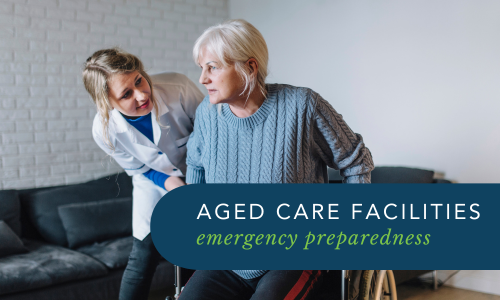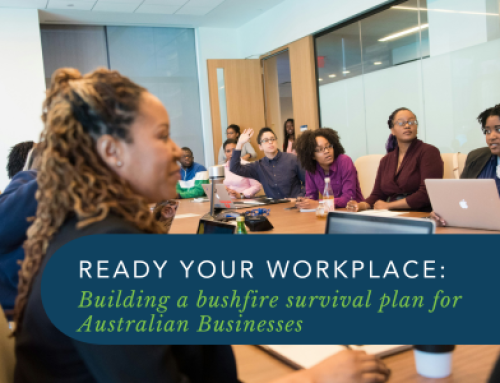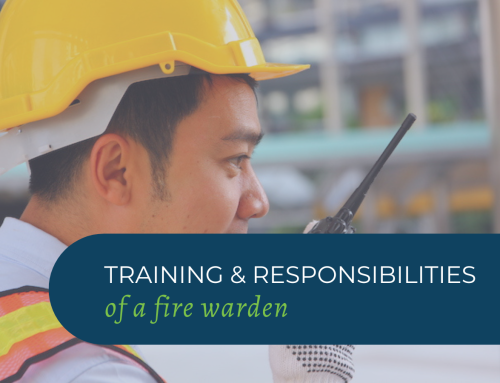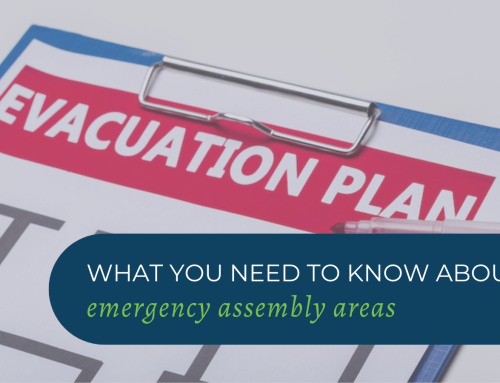Emergencies can be particularly challenging in Aged Care facilities, where the safety and well-being of elderly residents are paramount but potentially difficult to achieve. From medical crises to fires, severe weather, and power outages, various situations can arise unexpectedly. It’s crucial for staff to be well-prepared and equipped to handle these emergencies effectively.
Here’s how WEM can support your Aged Care facilities to manage these situations, ensuring residents’ safety and security.
Regular Drills and Training
Regular training sessions and drills are ESSENTIAL. They help staff and residents familiarise themselves with the procedures and ensure they can act swiftly and efficiently when an actual emergency occurs. This includes Emergency Control Organisation (ECO) training, which is crucial for managing evacuations and ensuring all residents and other occupants are accounted for and safe.
Why Emergency Training?
- Ensuring Resident Safety: Aged care facilities house vulnerable populations who may have mobility issues, cognitive impairments, or other health conditions. In a fire emergency, these residents may not be able to evacuate independently. Warden training equips staff with the skills to lead safe evacuations, ensuring all residents are accounted for and assisted according to their specific needs.
- Prompt and Effective Response: Fires can spread rapidly, and the first few minutes are critical for minimizing damage and ensuring safety. Training in the use of fire extinguishers and emergency protocols enables staff to respond swiftly, potentially extinguishing small fires before they escalate. This prompt action can prevent injuries and save lives.
- Enhancing Staff Confidence and Competence: Regular warden and basic fire safety training boosts staff confidence in handling emergencies. When staff members know exactly what to do and how to use the available equipment, they are less likely to panic and more likely to take decisive, effective action. This competence is crucial in high-stress situations.
- Promoting a Culture of Safety: Regular training sessions and fire drills foster a culture of safety and preparedness within the facility. This culture not only reassures residents and their families but also helps maintain a proactive approach to all aspects of safety and emergency preparedness, including fire prevention.
- Preparedness for All Staff Members: In an emergency, every second counts, and all staff members must be prepared to act, regardless of their role in the facility. Training ensures that everyone, from administrative personnel to medical staff, understands their responsibilities during a fire emergency and can work together effectively.
- Catering to Special Needs: Aged care facilities often accommodate residents with special needs, such as those requiring mobility aids or oxygen therapy. Warden training includes PEEP plan training & strategies for assisting these residents during an evacuation, ensuring their safety and compliance with specific protocols for their care requirements.
Emergency Tools that are Needed
> Emergency Response Plans or an Emergency Plan
Every facility should have a detailed emergency response plan tailored to its specific needs and resident demographics. This plan includes protocols for various scenarios and is designed to guide staff actions during crises.
An Emergency Plan is a comprehensive document outlining the steps to take during various emergencies. It includes:
- Emergency procedures and responses around evacuations, sheltering in place and lockdowns.
- Notification protocols for emergency services.
- Medical treatment and assistance guidelines.
- Effective communication strategies during emergencies.
The plan should be reviewed annually and updated as necessary, ensuring it remains relevant and effective. WEM we can create the perfect site-specific Emergency Plan that is fully compliant with the Australian standards.
> Emergency Evacuation Diagrams
Our expertise ensures that the emergency evacuation diagrams are professionally designed, accurate, and compliant with all relevant safety standards and regulations. This level of expertise is crucial in aged care facilities, where the safety of vulnerable populations is a top priority.
WEM creates evacuation diagrams that are clear, detailed, and easy to understand. This clarity is essential for staff, residents and other occupants, especially in high-stress situations where quick and effective evacuation is critical. Clear diagrams help reduce confusion and ensure that everyone knows the correct evacuation routes, procedures and location of resources that could be used to assist in the evacuation.
WEM’s Role in Emergency Management
Workplace Emergency Management (WEM) provides expert guidance in preparing Emergency Plans, compliant Evacuation Diagrams and staff training. Our consultants work closely with facilities to develop customised plans that comply with Australian Standards and ensure complete preparedness for risk assessed emergencies in your facility. We offer training in emergency procedures, including Warden (ECO) training & First Attack Fire Fighting, to help your team handle crises confidently and effectively.
For assistance in creating or updating your facility’s Diagrams, Emergency Plan, or for training services, contact WEM at 1300 831 694. Our team is ready to help you ensure the safety and well-being of your residents.
GET IN TOUCH
Are you ready for peace of mind that your workforce is as safe and prepared as possible?
With a dedicated team of staff ready to help you meet compliance requirements and improve the overall safety of your workplace, all you need to do is get in touch.
Request your free audit today!



